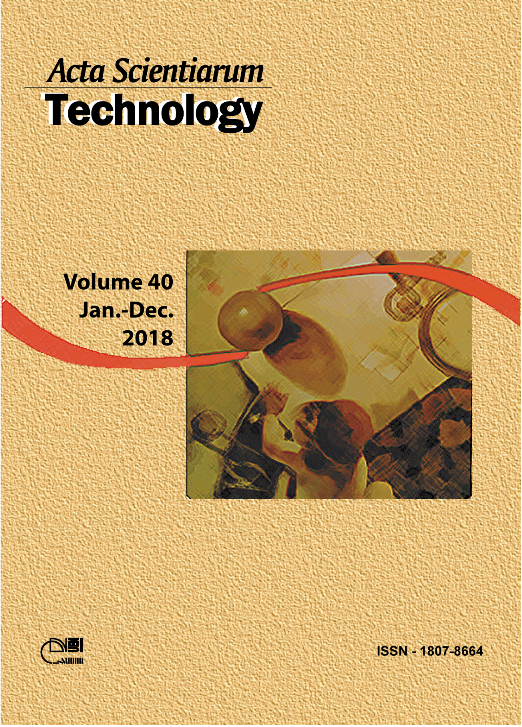<b>Integration of Nile tilapia (<i>Oreochromis niloticus </i> L.) production <i>Origanum majorana</i> L. and <i>Ocimum basilicum </i> L. using aquaponics technology
DOI:
https://doi.org/10.4025/actascitechnol.v40i1.35460Palavras-chave:
integrated aquaculture, Nile tilapia, vegetable crops, sustainability.Resumo
 This study aims to evaluate the effect of different initial densities of Nile tilapia fingerlings on water quality, fish growth, and production of marjoram (Origanum majorana L.) and sweet basil (Ocimum basilicum L.) in a recirculating aquaponic set up. The experiment was carried out on randomized block design and comprised four fish densities (0, 150, 250 and 500 fish m-3) and two crops, in which each treatment was continued for 45 days and replicated three times. Except for pH and total alkalinity, all water physicochemical parameters were increased significantly at high fish densities. In contrast, most of the biological parameters for fish were unaffected by culture density, although at the highest density crude protein percentage was significantly increased and ether extract percentage was significantly reduced. Plant productivities were highest when fish were cultured at density of 500 fish m-3, a density that was found to be appropriate for maintaining water quality and promoting fish growth while preventing toxicity and mortality. The present study has demonstrated the technical viability of coupling Nile tilapia culture coup with aquaponic production of marjoram and sweet basil.
Â
Downloads
Downloads
Publicado
Como Citar
Edição
Seção
Licença
DECLARAÇíO DE ORIGINALIDADE E DIREITOS AUTORAIS
Declaro que o presente artigo é original, não tendo sido submetido í publicação em qualquer outro periódico nacional ou internacional, quer seja em parte ou em sua totalidade.
Os direitos autorais pertencem exclusivamente aos autores. Os direitos de licenciamento utilizados pelo periódico é a licença Creative Commons Attribution 4.0 (CC BY 4.0): são permitidos o compartilhamento (cópia e distribuição do material em qualqer meio ou formato) e adaptação (remix, transformação e criação de material a partir do conteúdo assim licenciado para quaisquer fins, inclusive comerciais.
Recomenda-se a leitura desse link para maiores informações sobre o tema: fornecimento de créditos e referências de forma correta, entre outros detalhes cruciais para uso adequado do material licenciado.



















